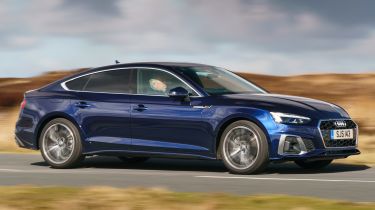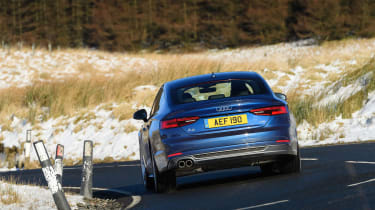Audi A5 Sportback (2016-2024) - MPG, CO2 and running costs
Good relative efficiency and low emissions are available across the A5 Sportback engine line-up

Just so you know, this is an older review of the 2016-2024 Audi A5 Sportback. If you are interested in information about the latest Audi A5, or news of upcoming Audi models, please follow the links provided.
No matter which engine you go for, the Audi A5 Sportback is an economical and cheap-to-run family car. What it loses to the BMW 4 Series in terms of dynamics and driver fun, it makes up with its slightly lower emissions and impressive fuel economy.
The entry-level front-wheel-drive diesel emits just 106g/km of CO2 when mated to the seven-speed S tronic gearbox.
Step up to the 40 TDI and that added performance will mean taking a hit on the fuel bills. However, even the thirstiest S line versions will still return 49.6mpg and emit 149g/km of CO2, not bad when you consider the huge torque on offer.
Unsurprisingly, the 2.0-litre petrol is the most expensive car (apart from the range-topping S5 and RS 5) to run, with the 40 TFSI emitting up to 158g/km. Fuel economy is between 40.9 and 44.8mpg depending on trim.
Insurance groups
Insurance for the Audi A5 Sportback starts at group 28, while an S5 is group 41. For comparison, the popular BMW 420d Gran Coupe in M Sport trim is group 31, though the 440i trumps the S5 by falling into group 38. A two-door Mercedes C220d Coupe in AMG Line guise sits in insurance group 32.
Depreciation
Residual values for the A5 Sportback are strong, and follow the current trend for Audi models. An A5 Sportback should retain around 46 per cent of its value after three years or 36,000 miles. The best model in the range is actually the most expensive S5, which holds on to 51 per cent of its value over the same time frame.
The BMW 4 Series Gran Coupe offers similar numbers, ranging from 41 per cent for the 430i, to 51 per cent for the 420d M Sport.









